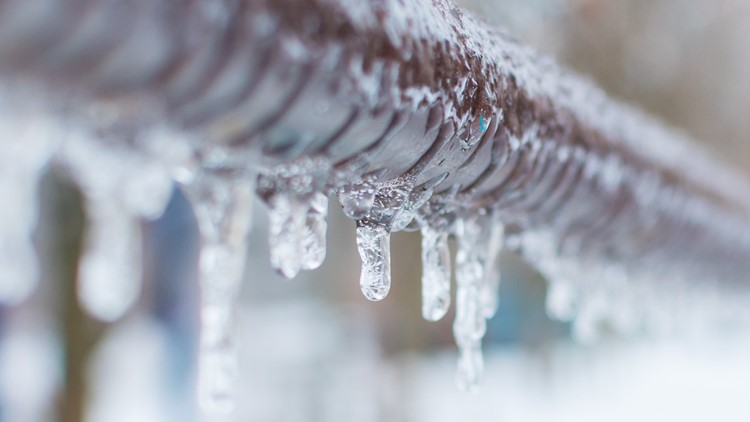Key Methods for Avoiding Frozen Pipes in Cold Weather
Key Methods for Avoiding Frozen Pipes in Cold Weather
Blog Article
Are you trying to find related information concerning How to prepare your home plumbing for winter weather?

Cold weather can damage your plumbing, especially by freezing pipes. Right here's how to prevent it from taking place and what to do if it does.
Intro
As temperatures decrease, the threat of frozen pipes increases, possibly resulting in expensive repair work and water damage. Comprehending just how to prevent icy pipelines is critical for homeowners in cool climates.
Understanding Icy Pipelines
What triggers pipelines to ice up?
Pipelines ice up when subjected to temperatures below 32 ° F (0 ° C) for expanded periods. As water inside the pipes ices up, it broadens, putting pressure on the pipeline walls and potentially causing them to rupture.
Threats and damages
Icy pipes can cause water system disruptions, residential or commercial property damage, and pricey fixings. Ruptured pipelines can flooding homes and trigger substantial structural damage.
Indications of Frozen Pipeline
Identifying frozen pipes early can avoid them from breaking.
How to recognize frozen pipelines
Search for decreased water circulation from faucets, uncommon odors or noises from pipelines, and visible frost on revealed pipes.
Avoidance Tips
Insulating vulnerable pipelines
Cover pipes in insulation sleeves or use heat tape to shield them from freezing temperature levels. Concentrate on pipelines in unheated or outside locations of the home.
Home heating techniques
Maintain interior rooms adequately heated up, particularly areas with pipes. Open closet doors to allow cozy air to circulate around pipelines under sinks.
Protecting Outdoor Pipes
Garden hose pipes and outside taps
Detach and drain garden hoses prior to winter. Install frost-proof spigots or cover exterior faucets with shielded caps.
What to Do If Your Pipes Freeze
Immediate activities to take
If you think icy pipelines, keep faucets open up to alleviate stress as the ice thaws. Make use of a hairdryer or towels taken in warm water to thaw pipelines slowly.
Long-Term Solutions
Structural modifications
Think about rerouting pipelines far from outside walls or unheated areas. Include additional insulation to attics, cellars, and crawl spaces.
Upgrading insulation
Invest in high-grade insulation for pipelines, attics, and walls. Proper insulation helps keep regular temperature levels and decreases the threat of frozen pipes.
Verdict
Protecting against frozen pipelines requires proactive measures and fast feedbacks. By comprehending the reasons, indications, and preventive measures, homeowners can shield their pipes throughout winter.
5 Ways to Prevent Frozen Pipes
Drain Outdoor Faucets and Disconnect Hoses
First, close the shut-off valve that controls the flow of water in the pipe to your outdoor faucet. Then, head outside to disconnect and drain your hose and open the outdoor faucet to allow the water to completely drain out of the line. Turn off the faucet when done. Finally, head back to the shut-off valve and drain the remaining water inside the pipe into a bucket or container. Additionally, if you have a home irrigation system, you should consider hiring an expert to clear the system of water each year.
Insulate Pipes
One of the best and most cost-effective methods for preventing frozen water pipes is to wrap your pipes with insulation. This is especially important for areas in your home that aren’t exposed to heat, such as an attic. We suggest using foam sleeves, which can typically be found at your local hardware store.
Keep Heat Running at 65
Your pipes are located inside your walls, and the temperature there is much colder than the rest of the house. To prevent your pipes from freezing, The Insurance Information Institute suggests that you keep your home heated to at least 65 degrees, even when traveling. You may want to invest in smart devices that can keep an eye on the temperature in your home while you’re away.
Leave Water Dripping
Moving water — even a small trickle — can prevent ice from forming inside your pipes. When freezing temps are imminent, start a drip of water from all faucets that serve exposed pipes. Leaving a few faucets running will also help relieve pressure inside the pipes and help prevent a rupture if the water inside freezes.
Open Cupboard Doors
Warm your kitchen and bathroom pipes by opening cupboards and vanities. You should also leave your interior doors ajar to help warm air circulate evenly throughout your home.

I'm very focused on How to prepare your home plumbing for winter weather and I'm hoping you enjoyed reading my entry. I beg you take the time to promote this blog entry if you enjoyed it. Many thanks for taking the time to read it.
Additional Information Report this page